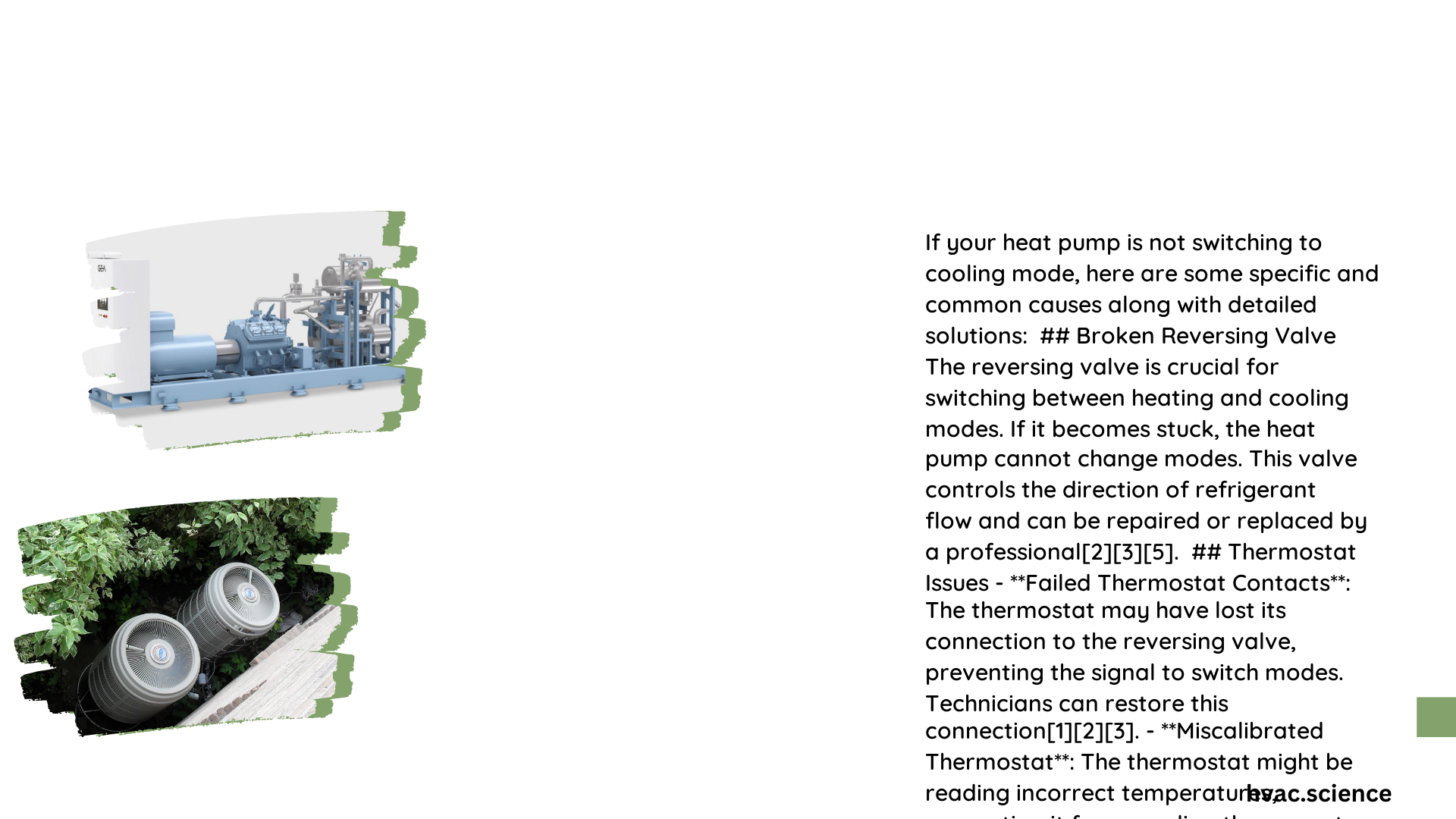A heat pump not switching to cool can be frustrating, especially during hot weather. This issue can stem from various factors, including thermostat settings, refrigerant levels, electrical problems, or compressor malfunctions. Understanding these potential causes and their solutions is crucial for maintaining a comfortable indoor environment and ensuring your heat pump functions efficiently in cooling mode.
Why Is My Heat Pump Not Switching to Cool?
When your heat pump fails to switch to cooling mode, it’s essential to investigate several potential causes. Let’s explore the most common reasons and their solutions:
Is the Thermostat Set Correctly?
The first step in troubleshooting a heat pump that won’t switch to cool is to check your thermostat settings. Here’s what you need to verify:
- System Mode: Ensure the thermostat is set to “Cool” mode.
- Temperature Setting: Set the desired temperature below the current room temperature.
- Fan Setting: Verify that the fan is set to “Auto” rather than “On”.
If these settings are correct and your heat pump still isn’t cooling, move on to the next potential issue.
Could Low Refrigerant Be the Culprit?
Low refrigerant levels can prevent your heat pump from cooling effectively. Here are some signs of low refrigerant:
- Longer cooling cycles
- Higher energy bills
- Reduced airflow from vents
- Ice formation on the evaporator coil
If you suspect low refrigerant, it’s best to call a professional HVAC technician. They can safely check and recharge the refrigerant if necessary.
Are There Any Electrical Issues?
Electrical problems can also prevent your heat pump from switching to cool mode. Here’s a checklist to help you identify potential electrical issues:
- Check the circuit breaker for any tripped switches
- Inspect the fuse box for blown fuses
- Look for loose or damaged wiring connections
- Verify that the heat pump is receiving the correct voltage
If you’re uncomfortable working with electrical components, it’s safer to call a professional electrician or HVAC technician.
Could the Compressor Be Malfunctioning?
A malfunctioning compressor can significantly impact your heat pump’s ability to cool. Here are some signs of compressor issues:
| Sign | Description |
|---|---|
| Unusual Noises | Loud banging, clanking, or buzzing sounds |
| Vibrations | Excessive shaking or vibrating of the outdoor unit |
| Short Cycling | Frequent on and off cycles |
| Warm Air | Air from vents is not cool |
| Tripped Circuit Breaker | Compressor repeatedly trips the circuit breaker |
If you notice any of these signs, it’s crucial to have a professional HVAC technician inspect your system.
How Can I Prevent Future Cooling Issues?

To avoid future problems with your heat pump not switching to cool, consider implementing these preventive measures:
- Regular Maintenance: Schedule annual professional maintenance checks.
- Clean or Replace Filters: Do this monthly or as recommended by the manufacturer.
- Keep the Outdoor Unit Clear: Remove debris and maintain proper clearance around the unit.
- Monitor Performance: Pay attention to any changes in cooling efficiency or unusual noises.
- Proper Thermostat Use: Learn how to correctly operate your thermostat for optimal performance.
By following these steps, you can help ensure your heat pump switches to cool mode when needed and operates efficiently throughout the cooling season.
When Should I Call a Professional?
While some troubleshooting steps can be performed by homeowners, certain situations require professional assistance. Call an HVAC technician if:
- You suspect refrigerant issues
- Electrical problems persist after basic checks
- The compressor shows signs of malfunction
- Your heat pump consistently fails to switch to cool mode despite correct settings
Remember, attempting complex repairs without proper knowledge and tools can lead to further damage or safety hazards.
By understanding these common issues and their solutions, you can better diagnose and address problems when your heat pump is not switching to cool. Regular maintenance and prompt attention to any issues will help ensure your system provides reliable cooling when you need it most.
References:
1. Switching Your Heat Pump To Cool Mode | Expert HVAC Tips
2. Using Your Thermostat
3. Thermostat Modes/Settings Mean Explained
